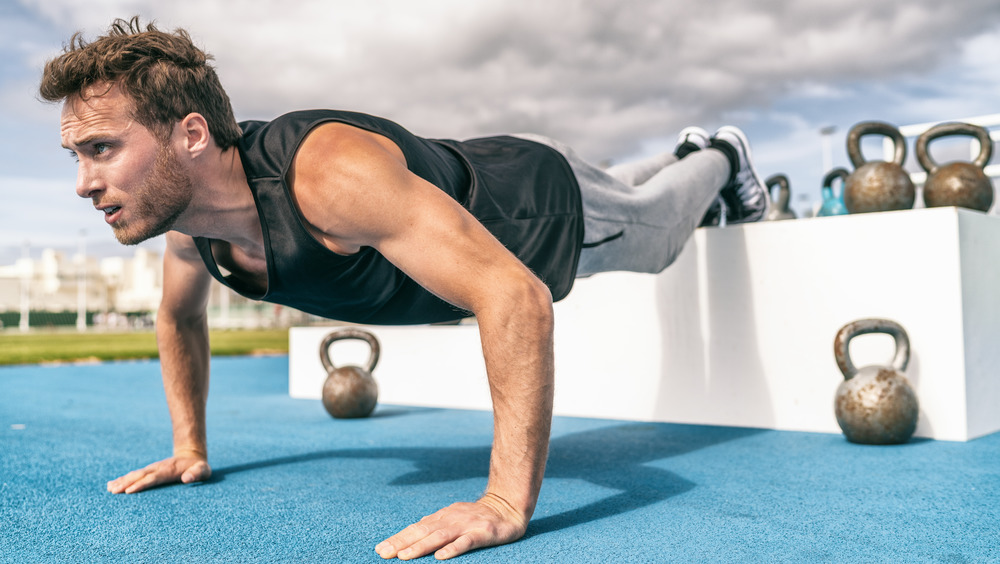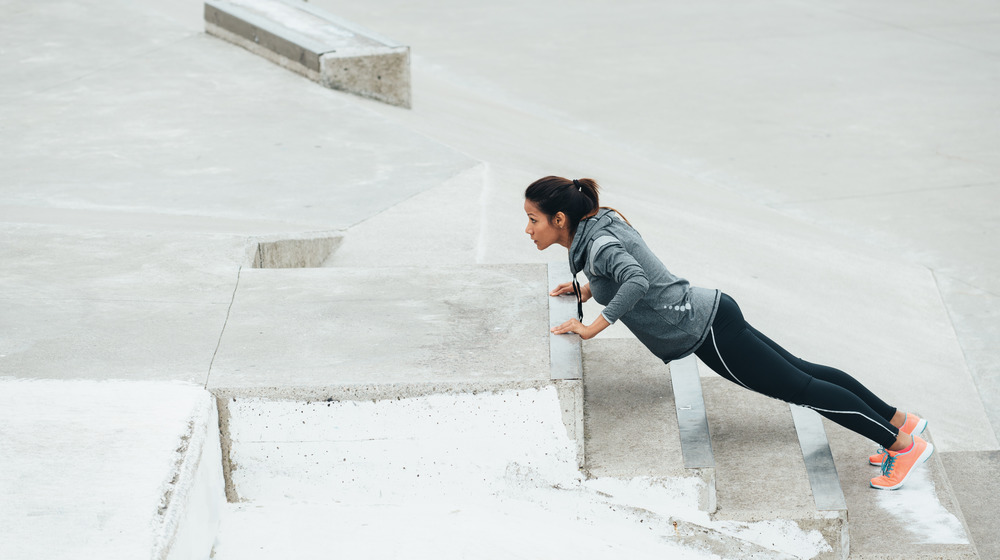Why You Should Try Adding Incline Push-Ups To Your Workout
Whether you struggle to get through a single set of standard push-ups, can do 50 military-style push-ups with ease, or always default to keeping your knees on the ground, you can benefit by incorporating incline push-ups into your workout. For those who struggle to do a push-up, an inclined version is a smart starting point to teach you proper form. For experts, incline push-ups still have plenty of benefits.
Beginners should consider swapping knee-based push-ups for incline push-ups, which are done using a box or bench (or kitchen chair or sofa if working out at home), to raise your upper body and make the push-up less stressful on the upper body. Unlike knee-based push-ups, inclines allow you to keep your body in a straight line and help you progress into standard push-ups. You can start standing and using a wall to push again, then gradually lower the incline until you're flat on the ground (via Popsugar).
For those who can already do push-ups with ease, incline push-ups still add work to your routine. In an incline pushup, your primary focus is on your chest muscles, while your arms get a bit more of a break, so if that's an area you're trying to target, incline push-ups may let you be more specific (via Healthline). And because they're less hard to do than a regular push-ups, you can incorporate them into easier workouts, or even use them as a warm-up to practice good form before moving into a set of standard push-ups.
How do you do an incline push-up?
To do an incline push-up, start by choosing a stable surface to rest your hands on — something that won't slip if you push it. This could be a wall, a workout bench, or a couch. If push-ups are tough for you, start higher up using a wall to brace your hands. If you're close to being able to complete an on-the-ground push-up, a couch will work well (via Verywell Fit).
Once you've picked your incline, place your hands shoulder-width apart with your fingers pointing forward. Then, step back until your body is in a straight line, aiming for an elevated plank position, and activate your core. From here, you can start doing your push-up, bringing your chest down towards the box or bench while maintaining that straight line from your head to your heels, then press back up and repeat (via Healthline).
Remember, good form is critical here: Keeping your core engaged and focusing on slow, smooth repetitions will get you better results than doing sloppy, fast push-ups. If you struggle to lower your chest all the way to the bench and press back up, you may need a steeper incline (via Verywell Fit).


